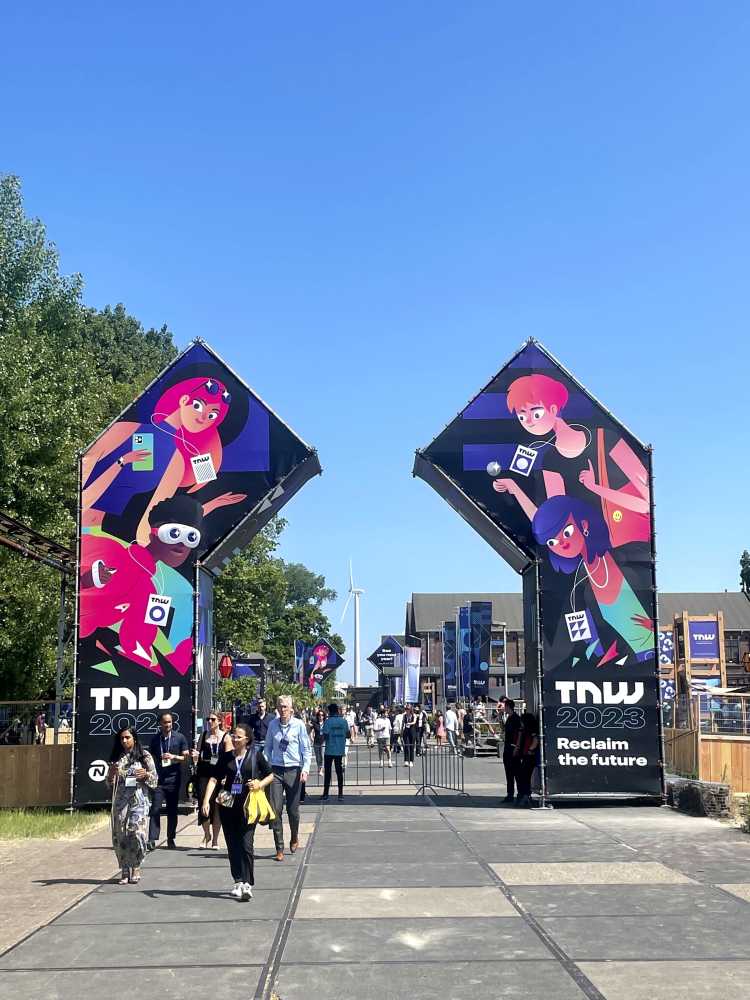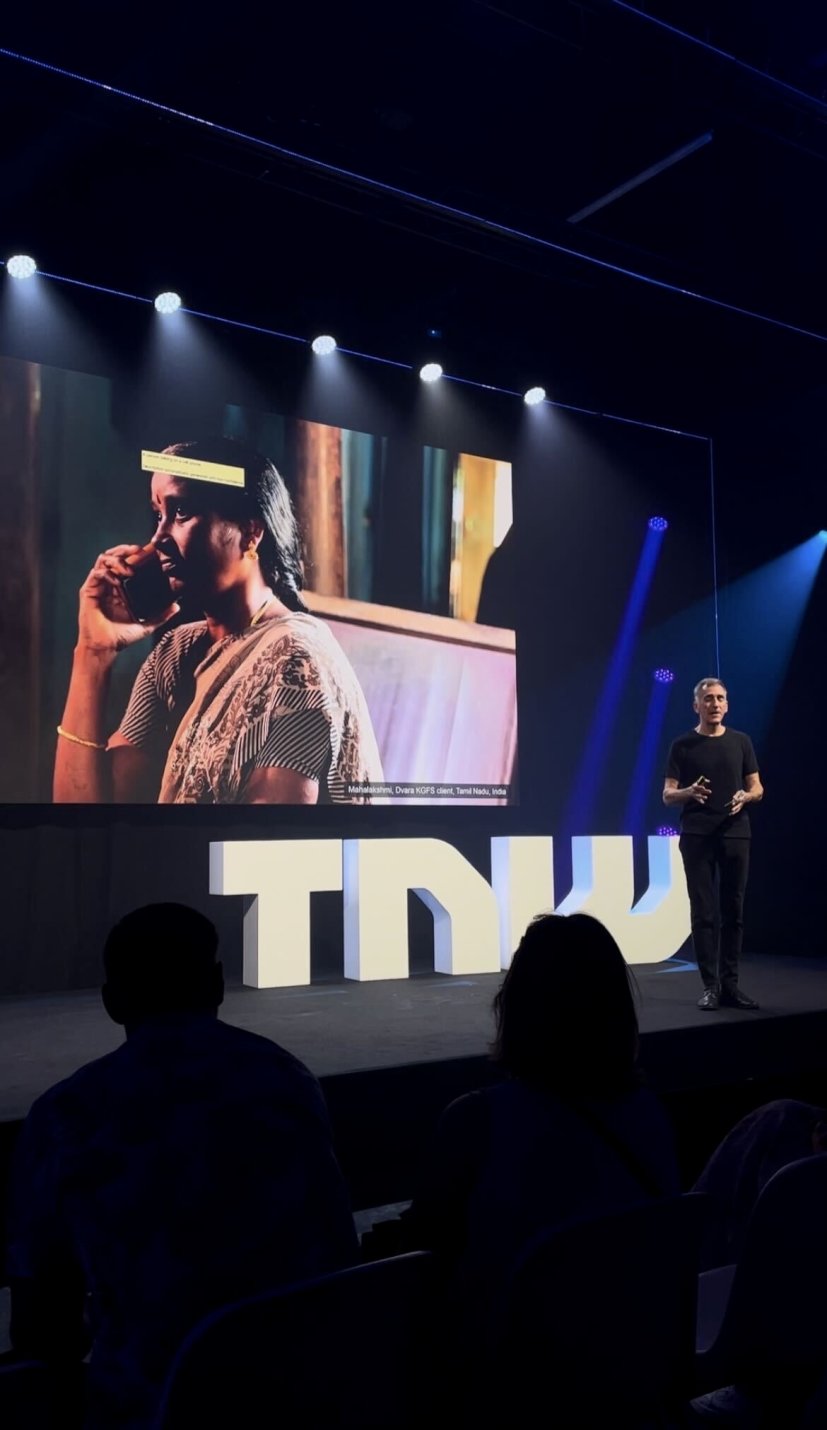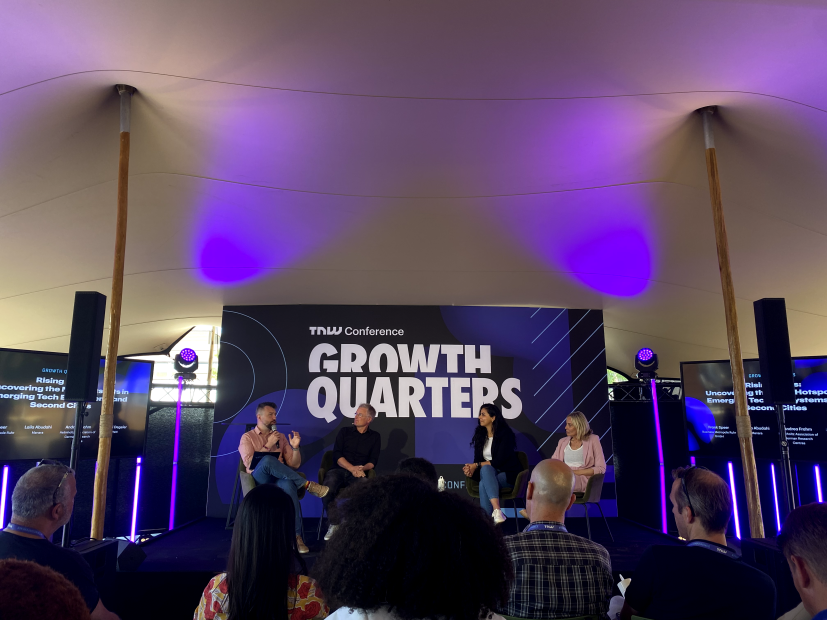Insights
Navigating the AI maze to discover valuable gems amidst the noise at The Next Web
Amsterdam recently hosted the highly acclaimed Next Web conference, where groundbreaking technology and digital innovation take center stage. In this realm of dazzling promises and grandeur, one must possess a keen eye to uncover the hidden gems. It seems The Next Web eagerly jumps the next hype cycle, and this time, it succumbed to the deafening hype surrounding Artificial Intelligence (AI), leaving behind last year’s focus on the once-touted web 3.0.
At Edenspiekermann we are deeply entrenched in the world of AI, so we were hoping to find new and different insights than the obvious point that was repeatedly stated that in the midst of AI’s awe-inspiring advancements, the human touch remains irreplaceable. This aligns with our previous articles on AI, where we explored the crucial balance between technology and human involvement. Venturing further into the conference’s immersive landscape, we were thrilled to find four insights that warrant sharing. These takeaways shed some valuable light on a realm off new possibilities.

1. The Rise of Sonic Identity in the Age of AI Interaction
With the evolution and rapid advancement of AI, where computers can now understand and process human language, we’re on the brink of witnessing a paradigm shift in how we access information and navigate the web. Chatting with voice assistants like Siri, Alexa, and Google Assistant paved the way to a whole new realm entirely, chatting with websites and digital tools which soon will be the new norm. But things will not stop there.
Thanks to advancements in AI, we’re not only going to interact with chatbots, but we’ll also be able to use natural language to communicate with computers in various forms – text, images, or even sounds. Imagine asking your favorite brand for information and hearing their unique sound response.
As this AI revolution becomes an everyday reality, brands face a new challenge altogether, as they need to think beyond the usual of their visual identity and written tone of voice. How a brand sounds becomes crucial, as customers engage more through voice interactions. We all know the iconic sound of an iPhone ringtone or the thrilling Netflix intro, right? But how would a brand like Wikipedia sound and how will they find their distinctive sound?
Zack McCune, the Director of Brand for the Wikimedia Foundation, and Roscoe Williamson, the Strategy and Innovation Director for MassiveMusic, embarked on an exciting journey to create a signature sound for Wikipedia. Why? Because they noticed a growing number of users accessing Wikipedia through voice assistants. They wanted to ensure that users could trust the information they received and feel the essence of the Wikipedia brand through sound.
“Brands face a new challenge altogether, as they need to think beyond the usual of their visual identity and written tone of voice. How a brand sounds becomes crucial, as customers engage more through voice interactions.”
This innovative project highlights the need for organizations to strategically consider how customers will access and interact with their brands. By creating unique sound experiences, brands can be easily recognized across different touchpoints, fostering trust and authenticity. It’s all about helping customers find genuine content and products while enhancing their overall brand experience. So, get ready to not only see your brand, but also hear them like never before. It’s a new era where technology not only speaks our language but also carries the tune of your favorite brands. Let the symphony of branding begin.
2. Is the rise of no-code a friend or foe? Exploring the future of developers
The emergence of no-code or low-code tools has sparked concerns among developers about the future of their role. Because these tools have enabled individuals with little or no coding background to create fully functional websites and applications, it raises questions about the necessity of developers in the development process. During The Next Web conference, Kateryna Rystsova, Head of Software Engineering at Infopulse, and Andrea Hak, a writer and editor at TNW, engaged in a thought-provoking discussion about the future of no-code tools and their integration into the current product development landscape. Let’s delve into the key insights from their conversation.
Accelerating MVP Development:
No-code or low-code tools are especially useful for swiftly building simple initial products, known as Minimum Viable Products (MVPs). While these tools may fall short when it comes to crafting tailored and robust solutions, they do empower non-developers to bring their concepts and prototypes to life, accelerating the development process. This means that product teams can now overcome technical barriers more easily, empowering them to launch their initial MVPs and embark on a collaborative journey with developers to fine-tune and elevate the product to new heights. Unlocking success requires a symbiotic dance between business-oriented team members and developers. The former must immerse themselves in the product’s business goals, user needs, and technical constraints, while the latter strategically crafts a sturdy foundation. By harmonizing core value propositions and user interactions with MVPs, they pave the way for different outcomes.
“Unlocking success requires a symbiotic dance between business-oriented team members and developers.”
Coding Skills Remain Indispensable:
Fostering collaboration within the product team, no-code tools bridge the gap between developers and their counterparts. Developers bring their unmatched expertise in deciphering technical requirements and crafting essential code, proving to be an invaluable asset. On the other hand, non-developers play a pivotal role by understanding the tools’ technical limitations, unlocking the potential for iterative product improvements and seamless collaboration with developers. Together they can form a dynamic alliance, encouraging innovation to reach new levels.
Relieving Developers of IT Services and Management:
No-code tools come to the rescue, liberating developers from the clutches of handling IT services and managing simple internal applications. By empowering non-developers to independently create and maintain these applications, developers find their wings freed top soar higher, focusing instead on tackling complex and critical tasks while showcasing their prowess in solving intricate technical challenges. In essence, the rise of no-code and low-code tools has ushered in a wave of transformation across the product development landscape. These tools not only expedite the creation of MVPs and foster collaboration among team members but also emphasize the continued importance of developers’ coding expertise and technical insights in crafting robust, tailor-made solutions. To truly harness the power of no-code development, businesses must embrace the integration of these tools and foster a shared understanding among team members. By doing so, they unlock the full potential of their developers while effectively leveraging the advantages that no-code brings to the table.

3. Exploring a new frontier of possibilities with banking in the metaverse
The metaverse presents a unique opportunity for financial services to connect with younger generations through gamified experiences and innovative education. It serves as a captivating platform for brands to engage audiences, surpassing the limitations of traditional digital campaigns. However, the sale of financial products primarily occurs through conventional channels or online platforms. Overcoming challenges related to trust in digital assets and promoting adoption requires a dedicated focus on enhancing digital identity and user experience. With such considerations in mind, the question still remains: how can one capitalize on the metaverse to generate revenue? Analysts project that the total addressable market will expand to $8 trillion in the next eight years, offering immense business potential.
“With immersive metaverse experiences capturing attention for an average of 40 minutes, instead of the mere seconds of attention you get through digital campaigns, brands can deepen their connections with audiences.”
While the metaverse is primarily centered around entertainment and creativity, it holds the potential for a more economically driven landscape in the future. Financial services can embrace this new digital economy and participate in the sale of digital creations. With immersive metaverse experiences capturing attention for an average of 40 minutes, instead of the mere seconds of attention you get through digital campaigns, brands can deepen their connections with audiences. The metaverse offers banks an opportunity to engage with employees and customers in a more immersive and dynamic manner. It has the potential to revolutionize banking by enabling virtual conversations with customers, promoting sustainability, and enhancing financial literacy through gamified experiences. As this new channel continues to evolve, especially in the realm of payments, trusted standards and methods will need to emerge, prompting bankers to explore alternatives such as augmented reality and virtual reality as payment channels by 2030. As the metaverse continues to grow, its impact on the attention economy and brand-audience connections cannot be ignored.
4. AI for inclusion? Risks and rewards for underserved communities
Artificial intelligence is a powerful tool that can potentially bridge the gap between the haves and have-nots. Imagine a world where logistics companies, which aren’t typically associated with finance, become the gateway to a universe of opportunities for underserved communities through the integration of financial services. The path to greater inclusion however is not without risks, but there are also rewards associated with AI implementation.
“This financial flexibility can empower underserved communities to seize opportunities, maybe even expand their operations, and break free from the limitations imposed by limited capital.”
One of the key benefits of embedding finance into logistics companies is the ability to provide access to tailored financial solutions. Imagine a scenario where you can obtain the exact loan amount you need, precisely when you need it. This financial flexibility can empower underserved communities to seize opportunities, maybe even expand their operations, and break free from the limitations imposed by limited capital.
However, we must also tread cautiously, recognizing the potential risks that come with relying on AI-powered algorithms. Discrimination, both implicit and explicit, is an unfortunate reality in many aspects of society, including the financial sector. Human biases can seep into algorithms, resulting in unfair treatment and exclusionary practices. Financial institutions' employees may discriminate against individuals they come into contact with, while algorithms may discriminate based on the criteria they are trained on.
To ensure AI promotes inclusion rather than perpetuating discrimination, rigorous safeguards must be put in place. Transparent and ethical AI practices should be a top priority for companies and policymakers. Regular audits of algorithms, diversity in training data, and ongoing monitoring can help identify and rectify biases. Additionally, involving representatives from underserved communities in the development and decision-making processes can provide valuable insights and mitigate potential pitfalls.
